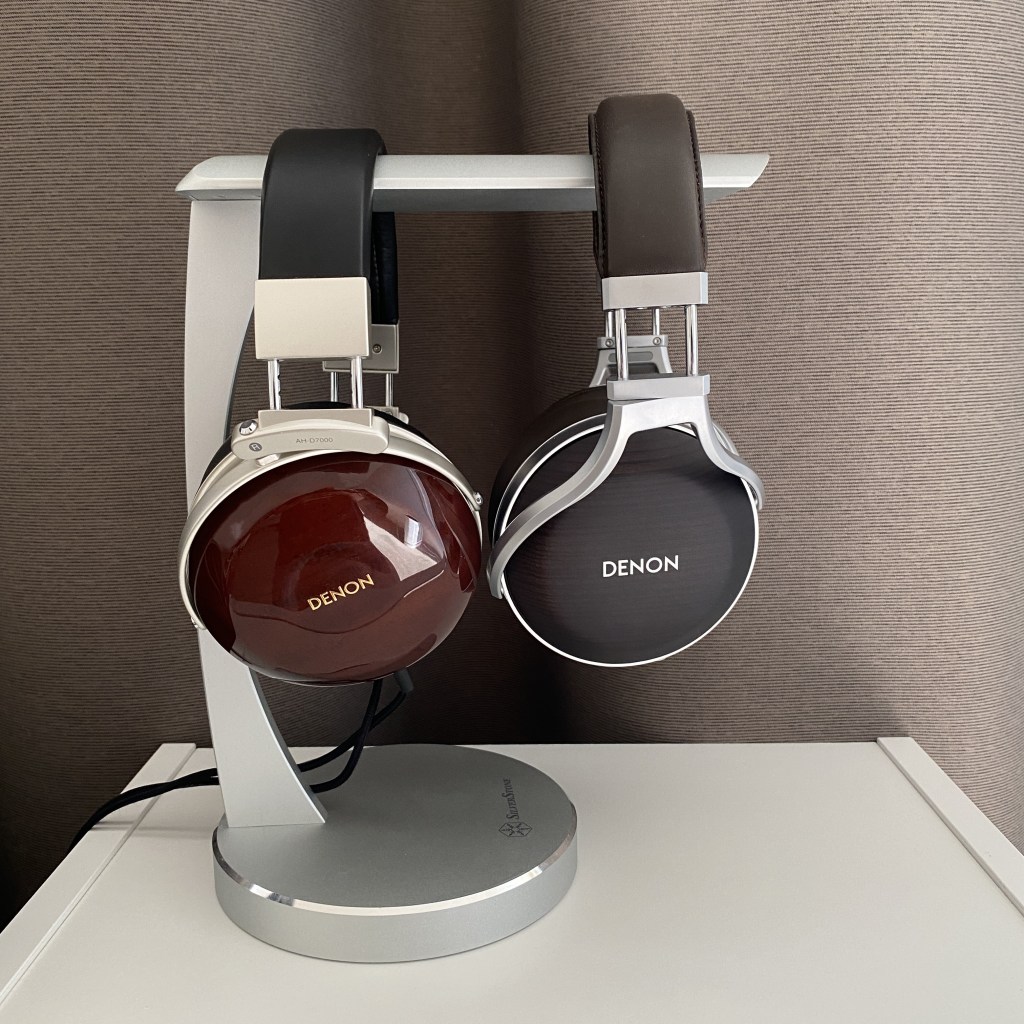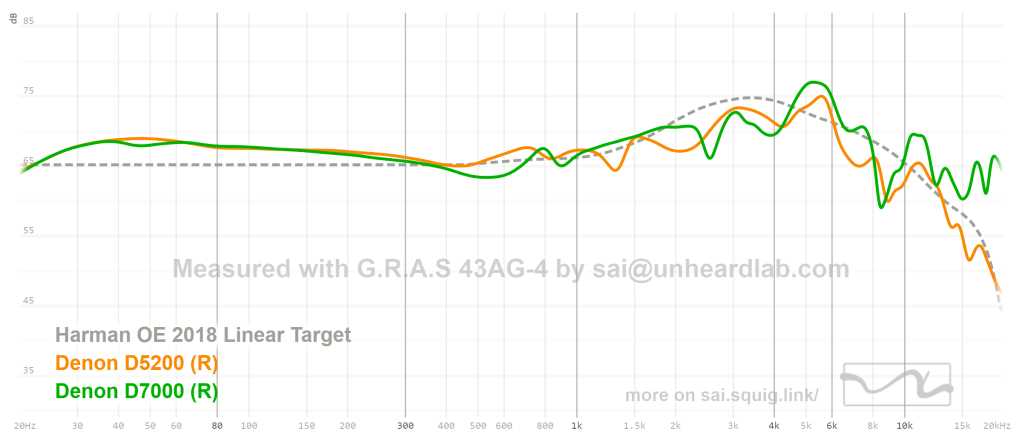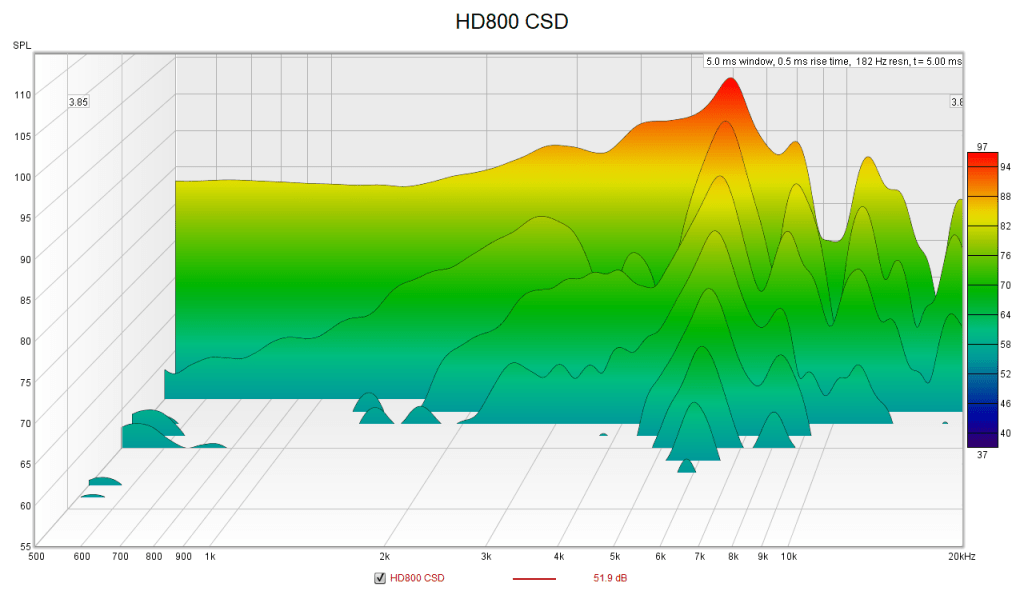
Oh the Denons… one of my first ‘audiophile’ headphones back in the days were the AH-D5000. Along with the D2000 and D7000 they were highly well regarded before Denon discontinued using Foster drivers as they moved to their proprietary designs with the X100 line. Those were… interesting headphones, let’s say. Attached below are the FR measurement done by Tyll:

A few years later Denon finally renewed their headphone product line with the D5200/7200/9200. This time one can easily see the design language of the old Foster series back at play. Do they still possess the renowed sound though? I have the D5200 here:

Overall Impression:
Slightly warm and punchy sound but overall quite neutral and easy going.
Tonality:
Mildly V-shaped. Bass is excellent in both quantity and quality of delivery, retaining the famous Denon/Fostex house sound with clean yet powerful bass response. There is a hint of bleed, but not to the point of being muddy. Mids are not as withdrawn like the TH900, although there is nonetheless a small scoop around 400-600hz which tend to colour vocals as slightly leaner than they should be. The scoope is by no means obvious though, as the bass boost bleeds slightly into the mids at aroudn 200-300hz which gives some male and female vocal a bit of extra body. So it really depends on what track you’re listening to.
Upper mids are slightly toned down to reduce the attack or harshness of vocals. But it is followed by a small peak at around 5-6khz though. Consequently there’s a bit of graininess when the harmonics of mid-range instruments are accentuated here. Treble on a whole is quite smooth and pleasant without obvious peaks or troughs. You don’t get as much ‘sparkle’ as with the old Denon or the Fostex series but some have found these to be overly sharp, so it’s more of a matter of taste.
Technicality (qualities that may not be directly reflected in FR):
Pretty decent. Macrodynamics and slam are defintely the strong points, as all the biodynamic driver headphones are renowed for. In this area, the D5200 can match the performance of high-end cans. Soundstage size is better than a lot of closed-back cans and even some open backs. Overall at similar level with the HD6XX series without the three-blob effect, although not as ‘natural’ in transparency or openness. Resolution is passable. As mentioned above there’s occasionally some grain in the upper-mids or lower-treble area where there are a couple of kinks in the FR. Resolution takes a hit in that area, as a result.
Pads:
Not much to say here. Aftermarket pads made of leather as opposed to protein of the stock pads generally bring down the treble while slightly boosting the bass. Of note the Accessory House pads with their smaller inner opening kill the treble too much for these. Those are more suited for the Fostex cans.

Finally, let’s compare the D5200 to the legendary D7000.

Up to 1khz they behave quite similarly. Not so much from that on wards though. One might think these are pretty bright, but I don’t really hear it that way. Overall tuning is quite neutral albeit clearly coloured with a kind of ‘grandness’. Bass is visceral, authoritative yet well-controlled. The excess upper treble energy comes across as somewhat accentuated splash and sparkle of percussion instruments, but not overdone. Mids are more smoother than the D5200, with a hint of ‘sweetness’ due to the small scoop in the upper mids. I tend to appreciate this scoop as the Denons tend to have boosted low ends and highs, so if the mid-range were also forward they can become harsh sounding or just too much to take. In terms of technicalities the D7000 is noticeably better especially with in soundstage size.
P.S. neither of the lower treble peak of the D5200/D7000 are attributed by time domain issues. Perhaps that’s the reason why they don’t come across as grainy/sharp as the graph may suggest. Attached below are the CSD (cumulative spectrum decay) measurements:


As can be seen there are some lingering energy below 1khz in both cases, which is quite common for closed-backs. I don’t find them to be in any way detrimental to sound quality when listening to music.
In comparison, the CSD measurement of the Sennheiser HD800 which is known for its excellent transient response and clean background:


One thought on “Denon AH-D7000 and AH-D5200: measurement and review [updated measurement]”